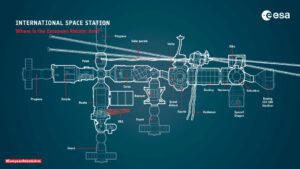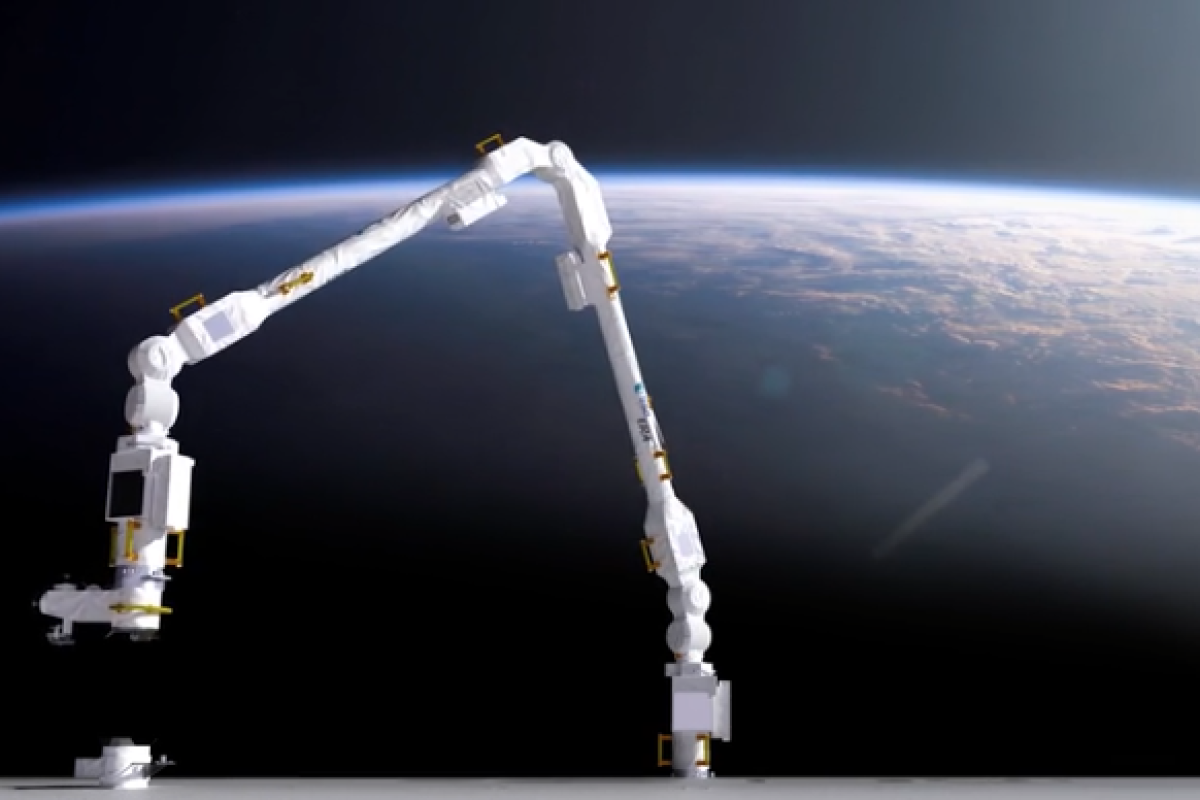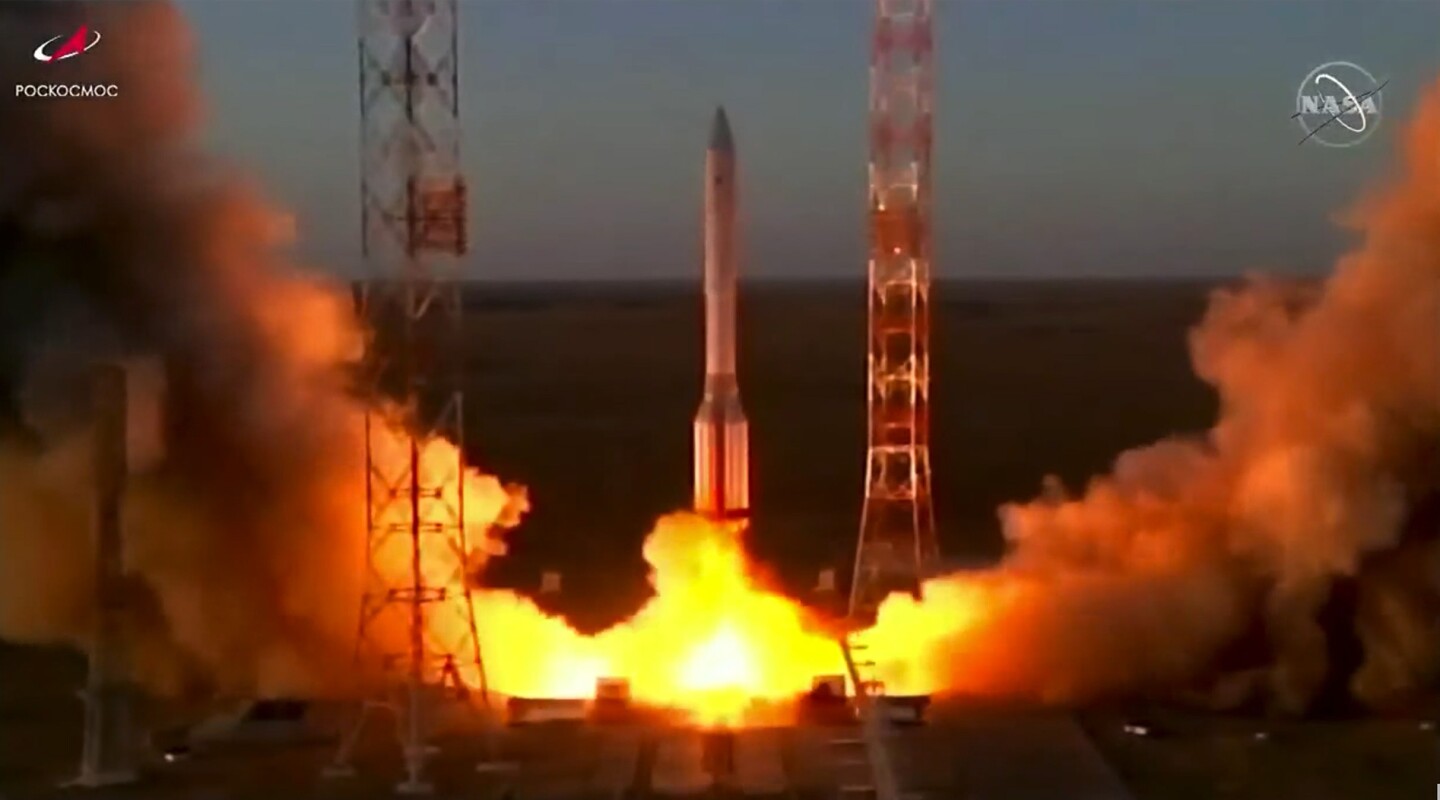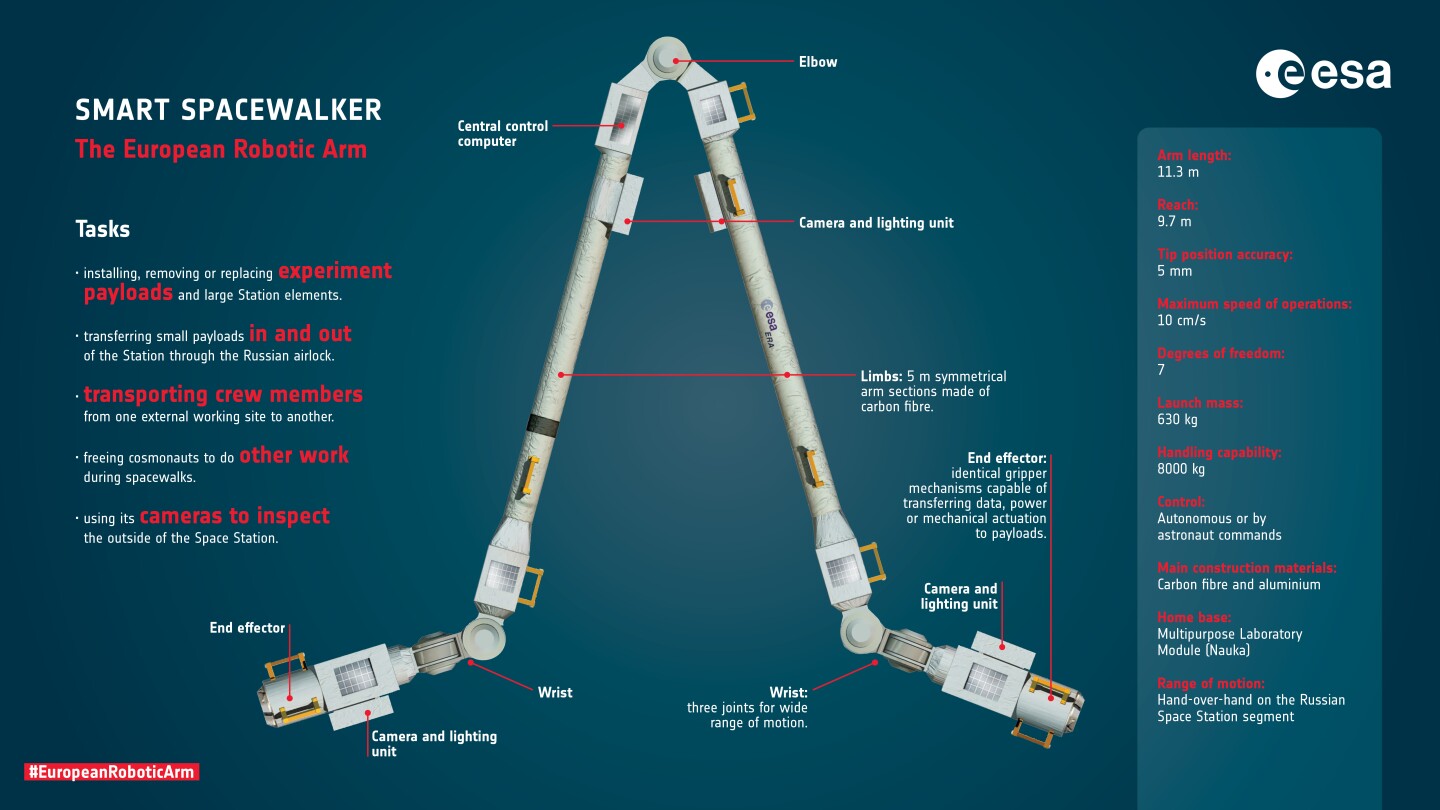Europe’s robotic arm and Russian’s Nauka on their way to ISS

Paris, 23 July 2021. – The European Robotic Arm (ERA) is on its way to the International Space Station (ISS) after its launch from the Baikonur Cosmodrome in Kazakhstan, the European Space Agency (ESA) said.
The 11-m-long robot is travelling folded and attached to what will be its home base – the Multipurpose Laboratory Module, also called ‘Nauka’, ESA said. The Proton-M booster placed Nauka and ERA into orbit around ten minutes after liftoff, nearly 200 km above Earth, the agency said.
ERA is capable of ‘walking’ around the Russian parts of the orbital complex. It can handle components up to 8000 kg with 5 mm precision, and it will transport astronauts from one working site to another.
The Russian Nauka module (‘nauka’ means ‘science’ in Russian) was delayed for years due to technical problems that Roscosmos, the Russian space agency, finally solved.
Space News quoted Russian sources yesterday that Nauka suffered further problems after reaching orbit. The space agencies – NASA and Roscosmos – did not comment these rumors.
“Walking” robotic arm on its way to ISS
By Anthony Wood
July 22, 2021
Render of the European Robotic Arm (ERA), the first robot able to "walk" around the Russian segment of the ISS
The International Space Station is about to receive its third robotic arm, which will be capable of "walking" around the Russian segment of the orbital outpost all by itself. The new European-made arm is on its way to the ISS after being launched atop a Russian Proton-M rocket from the Baikonur Cosmodrome in Kazakhstan.
Space is an inherently hostile environment for humans, and in order to stay alive we are forced to live inside the pressurized hulls of spacecraft and the cumbersome confines of Extravehicular Mobility Units – commonly known as spacesuits.
In order to help maintain the aging space station, grab incoming spacecraft and help astronauts during their excursions beyond the airlock, the ISS has been fitted with two robotic arms supplied by the Canadian and Japanese space agencies.
Following its launch from the Baikonur Cosmodrome at 14.58 CEST on July 21, a third European-made robotic arm is now making its way to the orbital outpost attached to the new Nauka Multipurpose Laboratory Module.
The European Robotic Arm (ERA) being launched on a Proton rocket from the Baikonur Cosmodrome
Roscosmos
This latest addition will be the first robotic arm to service the Russian segment of the ISS and it will also be the first designed to "walk" across the outpost’s outer surface.
The 11-m (36-ft) European Robotic Arm (ERA) is almost completely symmetrical in design, and is joined in the middle by a flexible "elbow’ joint." On each end of the robot are "wrist" connectors, which are capable of interfacing with various payloads, coupling with the space station and transferring data.
Whilst the new Nauka module is set to be ERA’s primary base of operations, the robotic arm will also be able to "walk" hand-over-hand across the station thanks to the flexibility afforded by its seven motorized joints.
In order to move, ERA reaches out with its "free hand" and anchors itself to one of the grappling fixtures installed across the Russian section of the station’s outer hull. It can then release its initial point of connection with the ISS, and repeat the process to move further across the outpost.
Specs of the ERA
ESA
The arm is capable of being controlled from both outside and inside of the station, and can handle loads of up to 8,000 kg (17,637 lb) while moving with a precision of within 5 mm. It will also be capable of transporting astronauts and cosmonauts from one work site directly to another by acting as an orbital cherrypicker.
“Moving hand-over-hand around the Russian parts of the Station, the European Robotic Arm will bring more freedom, more flexibility and more skills to space operations,” says ESA Director of Human and Robotic Exploration David Parker.
After entering low-Earth orbit shortly after launch, Nauka is now on an eight-day journey that will lift it into a higher orbit to reach the ISS. The new module is set to use its engines to autonomously dock to the Zvezda Service Module of the Russian segment of the ISS on July 29.
No comments:
Post a Comment